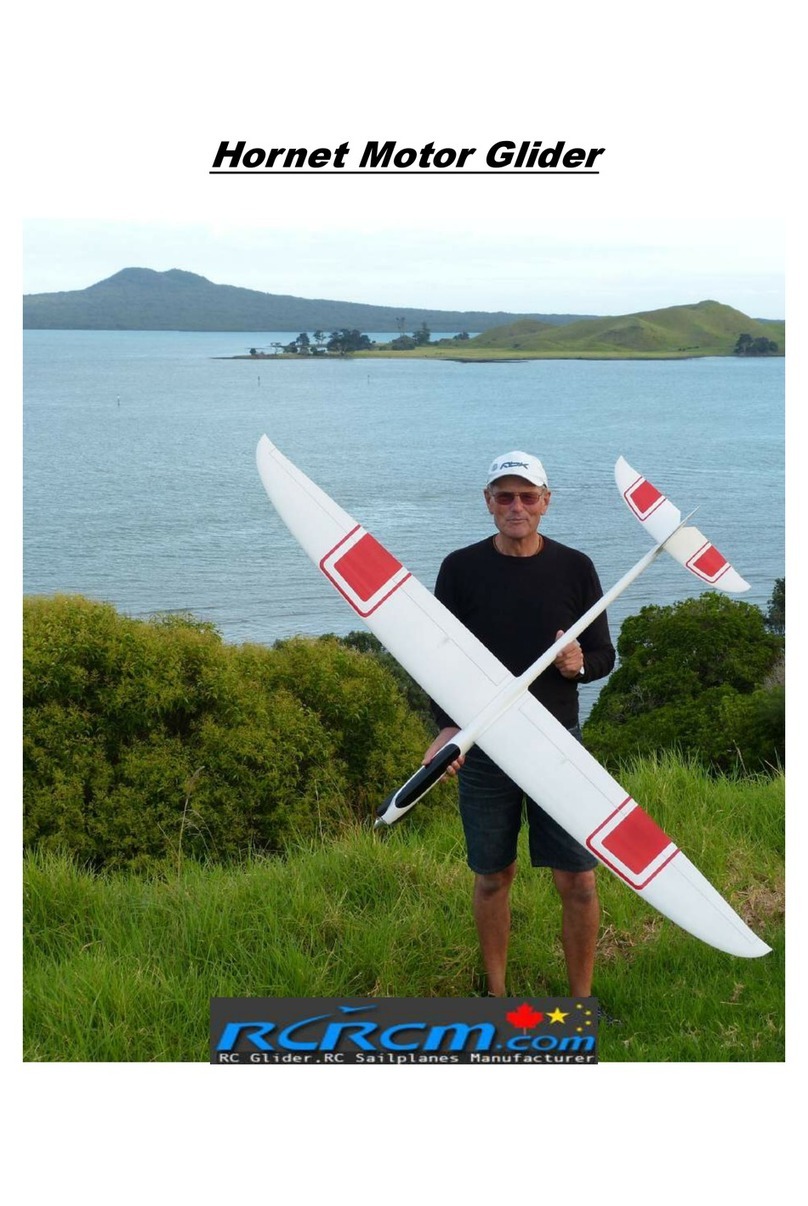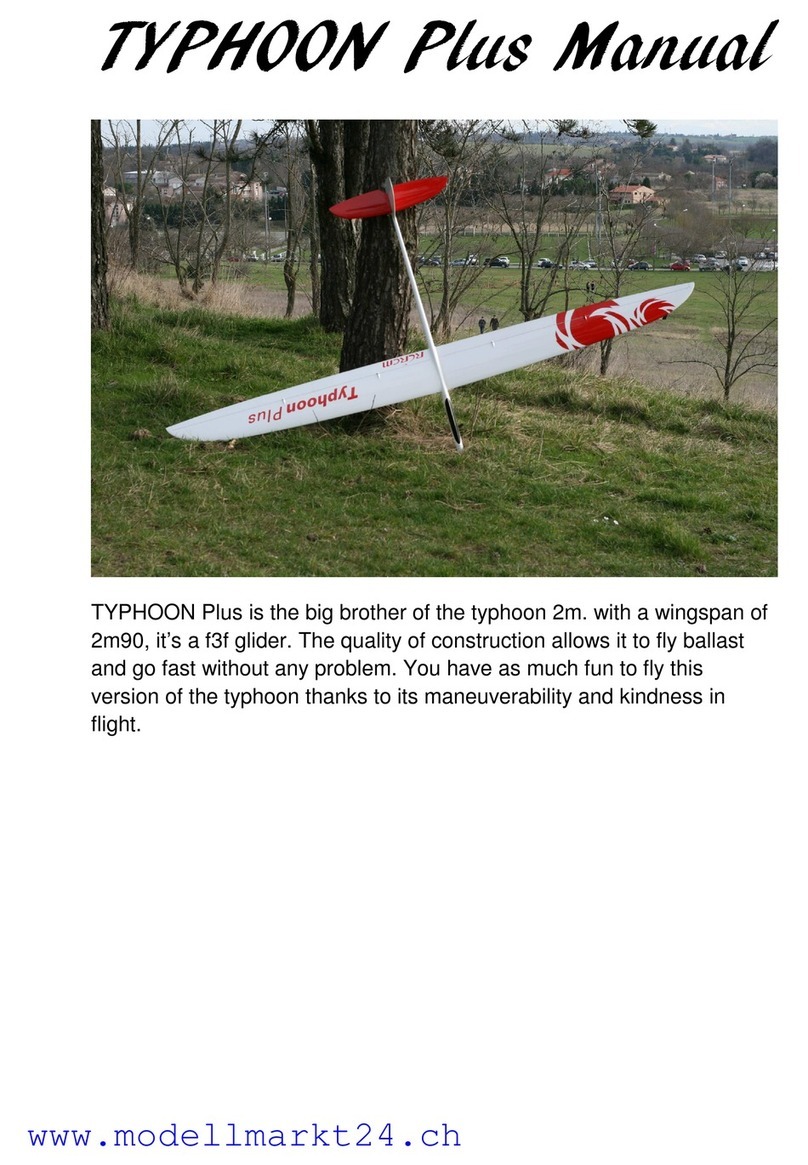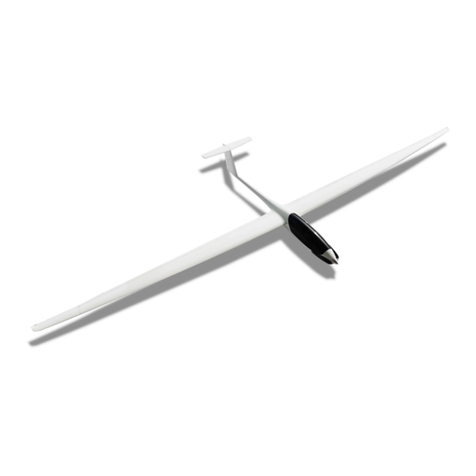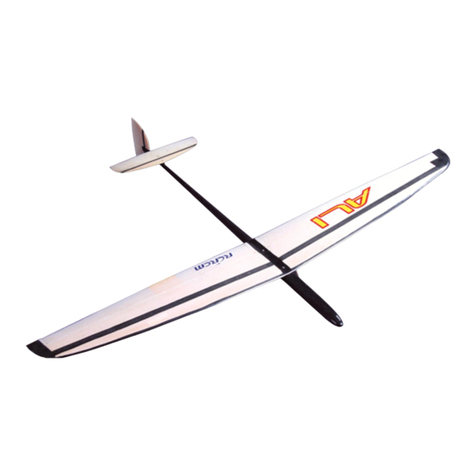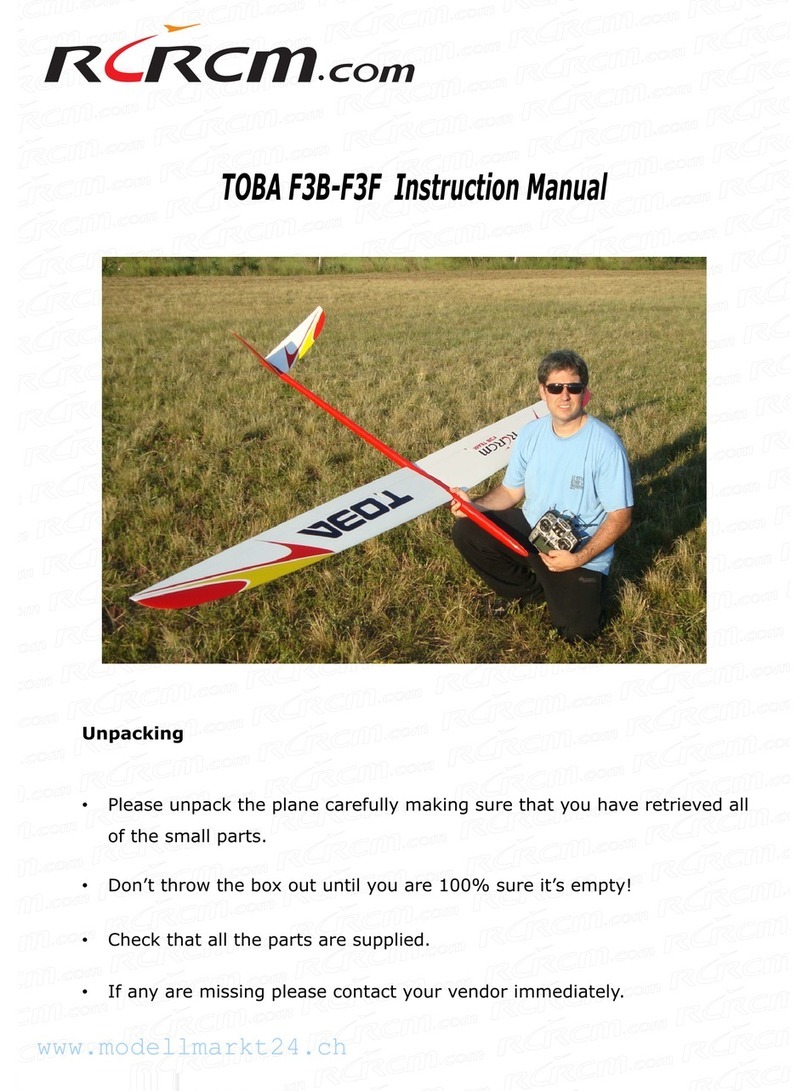Now we need to set up the servo arms.
Once you have the holes in the arms, centre up your servos as shown. Ideally, do
this with a servo tester. Note the subtrim numbers for each servo. Doing it with the
arms untrimmed and left long makes it easy to get them symmetrically placed by eye.
Once centred, remove the arms and move them round by one tooth as shown in the
second picture. Put threadlock onto the servo screw and install the servo screw.
Then trim the servo arms as shown and install the linkages as shown above.
Aileron servo install:
Centre the servo as shown above. Tape the tip of your aileron flush with the tip of the
wing in the neutral position. Once your linkage is connected and the servo in place in
the wing, centre the servo once more to be sure. Then proceed to glueing the servo
in as shown overleaf. Ensure that the linkage runs perpendicular to the hingeline.
Your servo will now be fixed in at neutral, with the surface also at neutral.
Flap servo install:
Offer the wing up to the fuse. Find the neutral position. Then move the flap UP by
7.5mm. This is your maximum up movement. Tape the flap up so that it cannot move
from this precise position. Then, using your servo tester, drive your flap servo to its
endpoint so that the arm is as far towards the spar as possible. This is your max UP
servo position. Connect up the flap linkage, and install the servo. Ensure the linkage
runs perpendicular to the hingeline. Ensure that your flap is still in the correct position
as decribed above, and the servo drive to its fully up endpoint.
Reference material: http://www.rcrcm.com/pdf/RCRCM-Airframes-ail-flap.pdf






